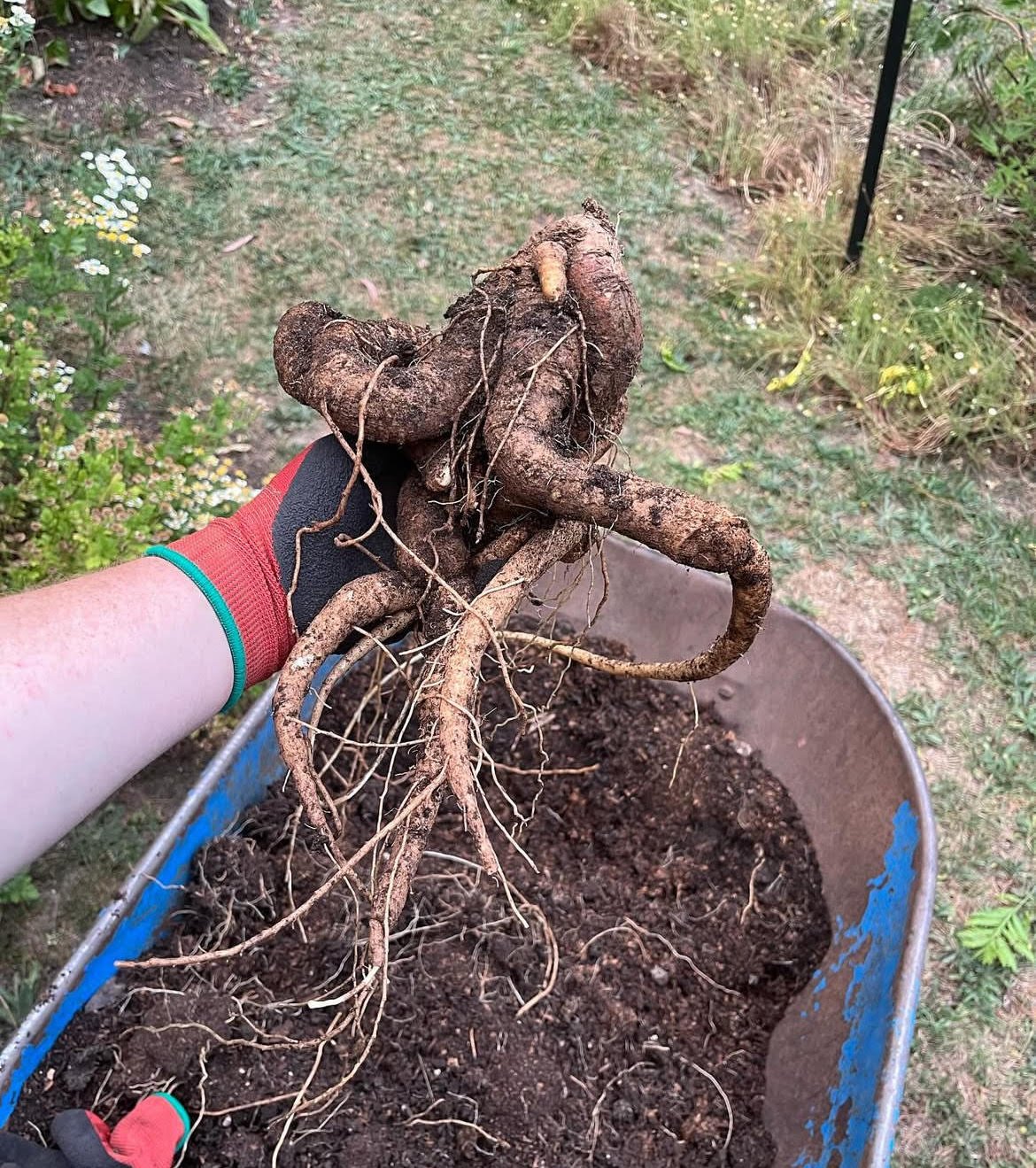 Image 1 of 6
Image 1 of 6

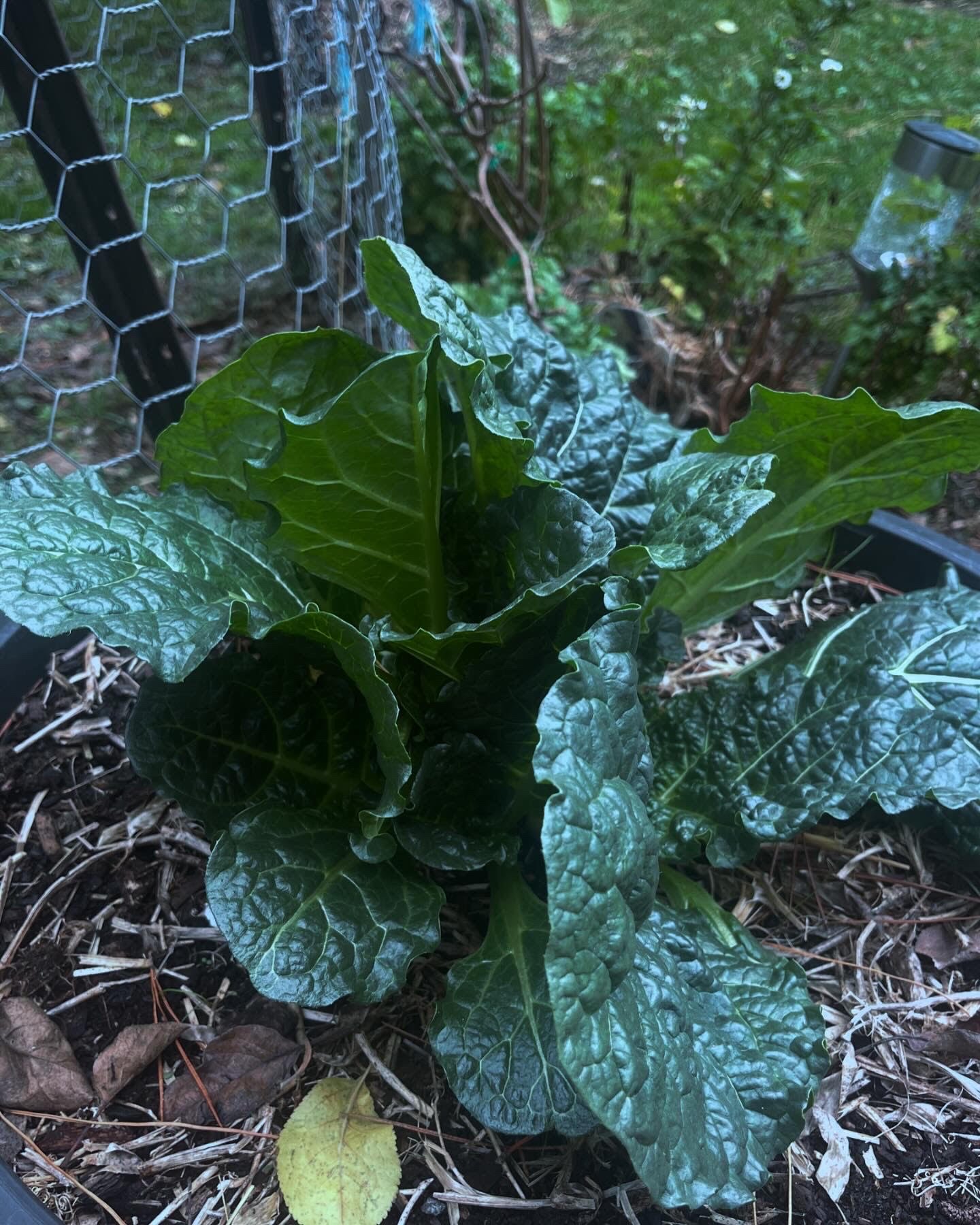 Image 2 of 6
Image 2 of 6

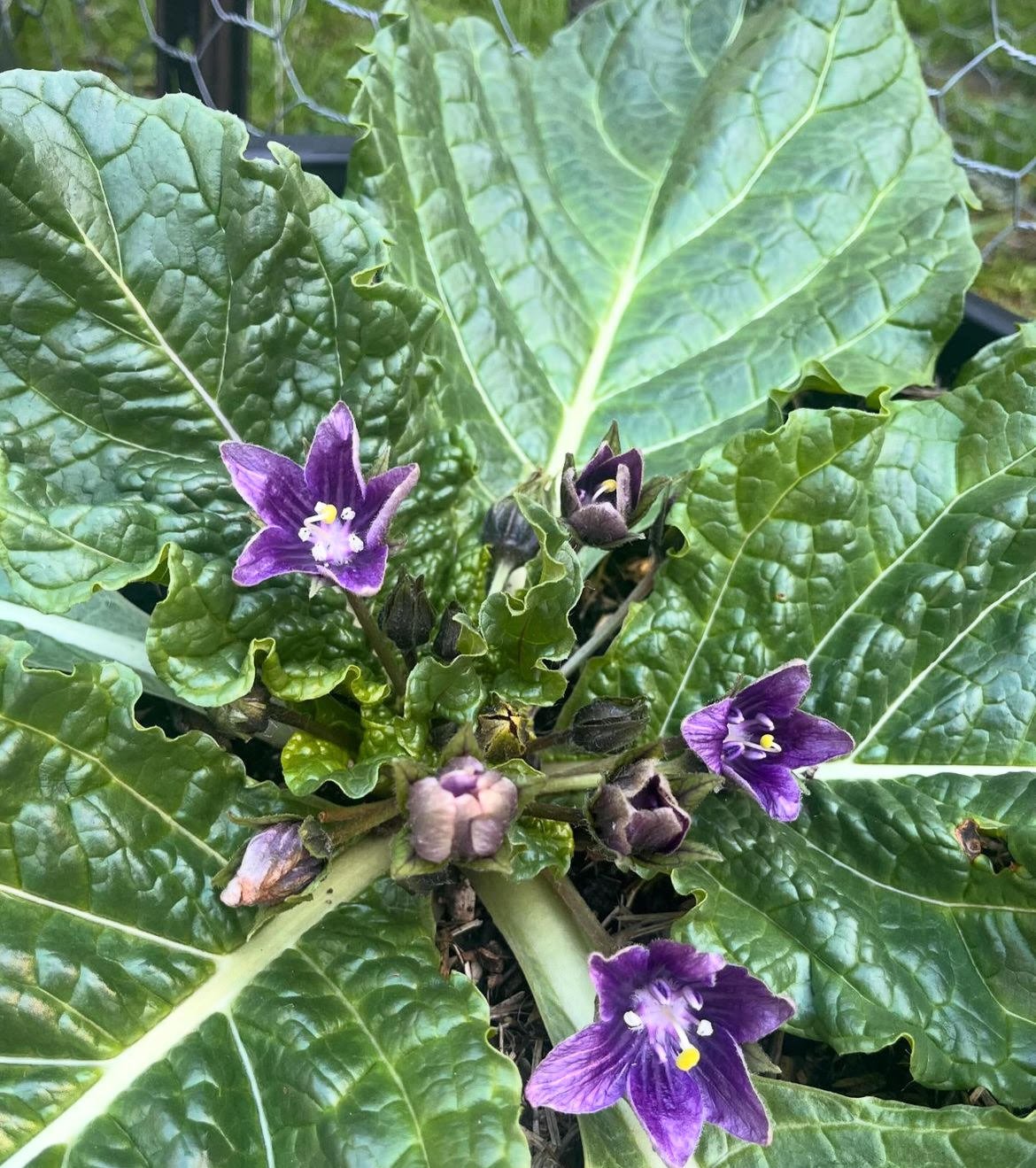 Image 3 of 6
Image 3 of 6

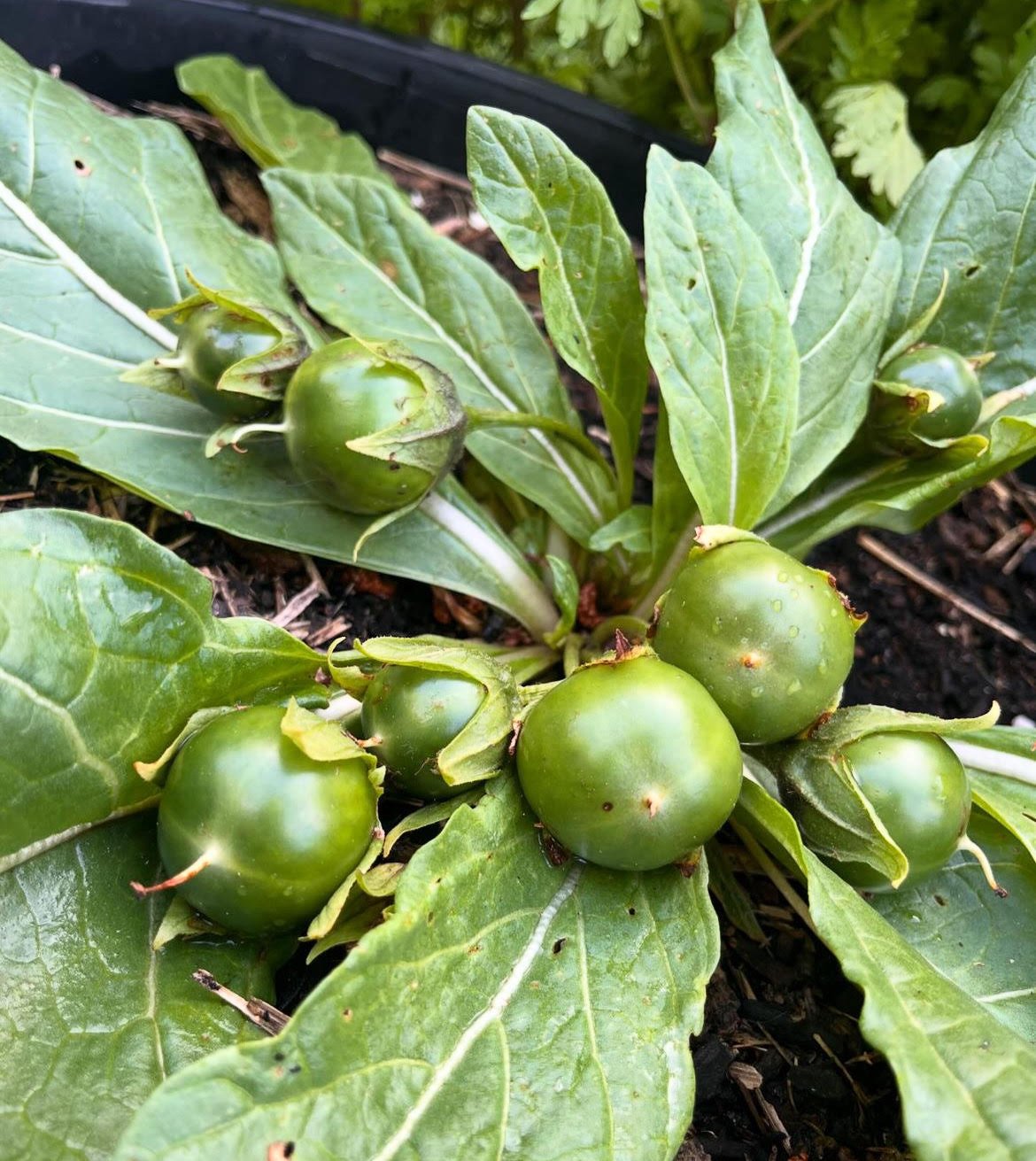 Image 4 of 6
Image 4 of 6

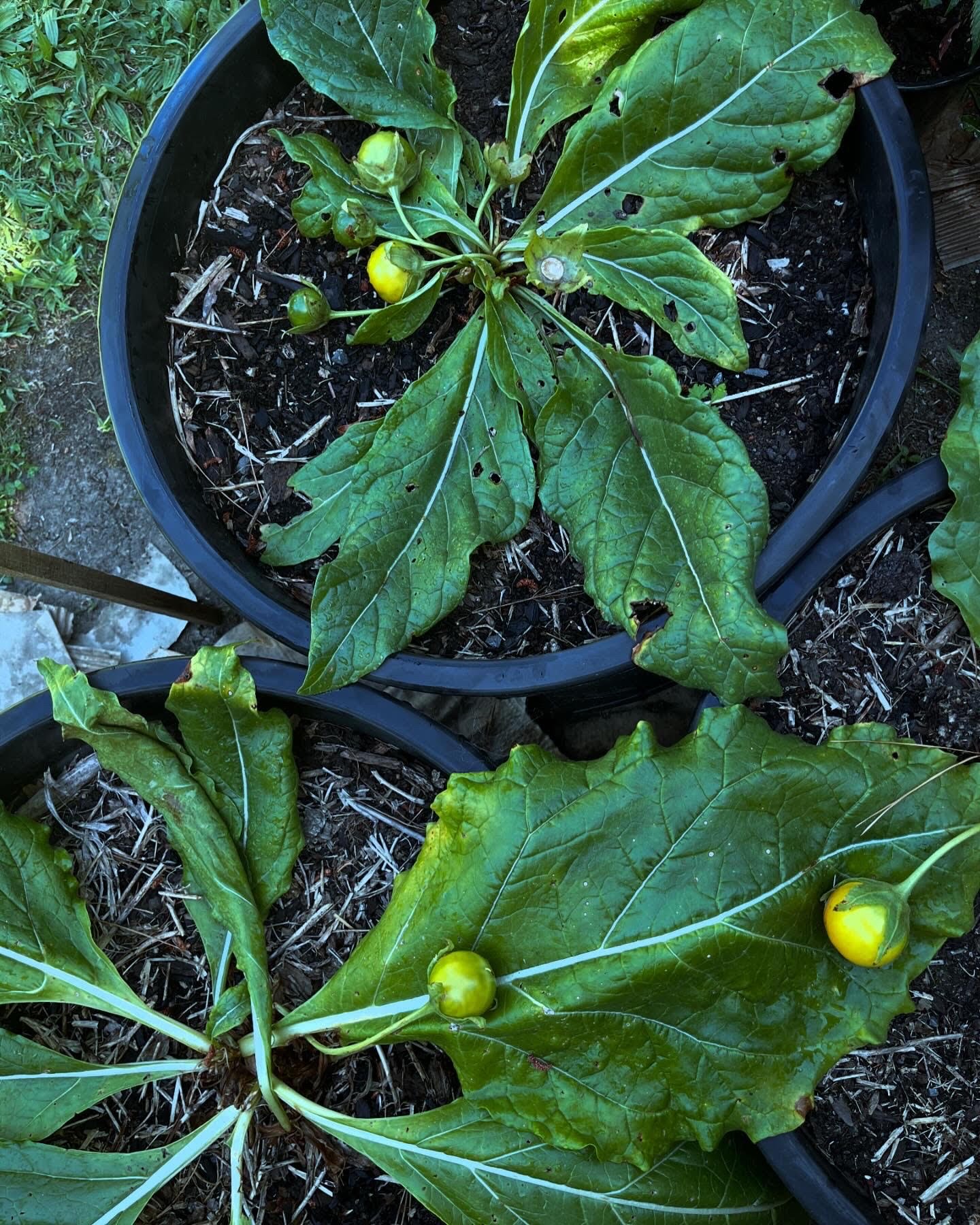 Image 5 of 6
Image 5 of 6

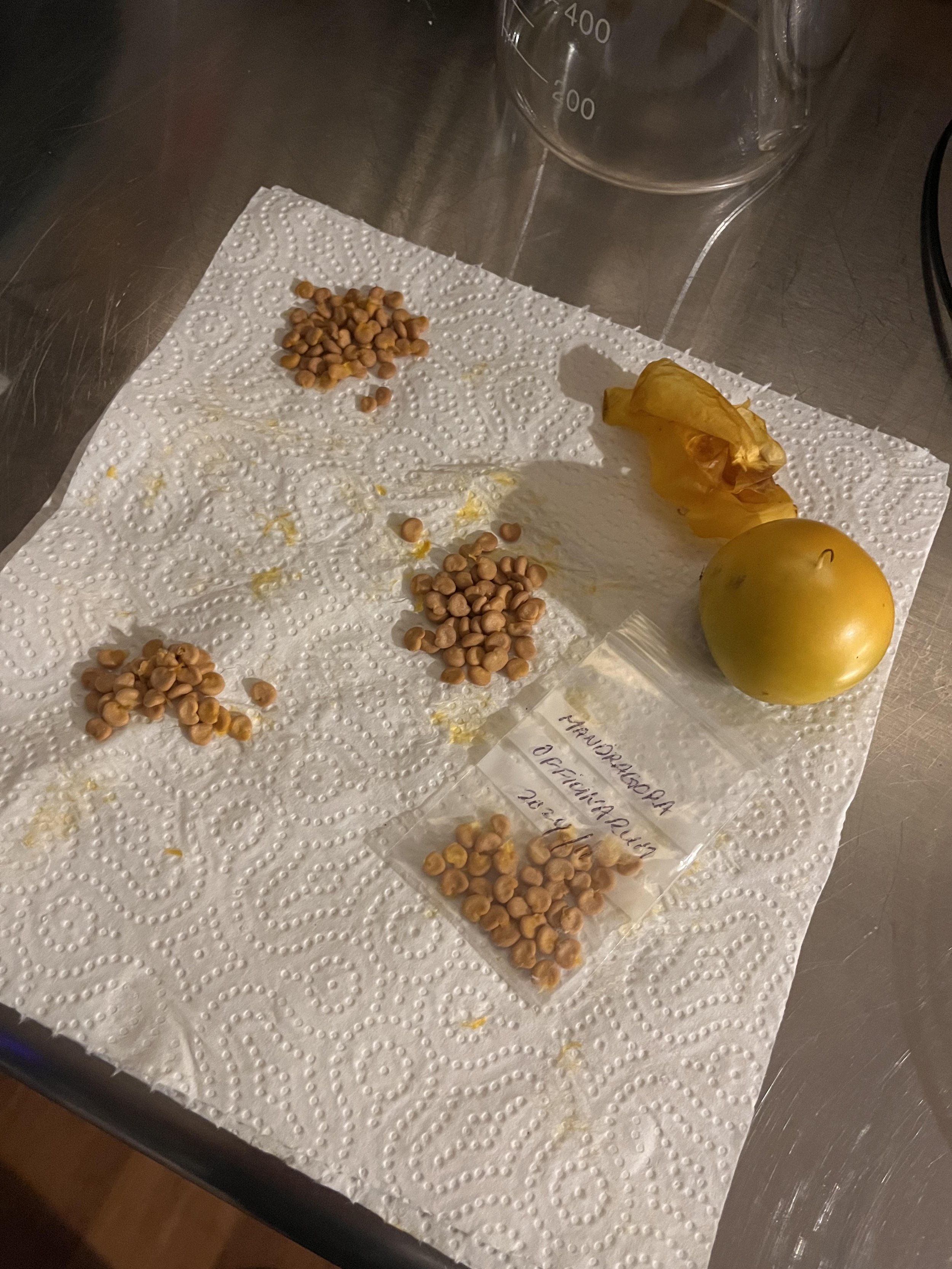 Image 6 of 6
Image 6 of 6







Mandrake Seeds
Mandrake (Mandragora officinarum)
Description:
Mandrake is a rare herbaceous perennial plant of the Solanaceae (Nightshade) family, native to the eastern Mediterranean region, southern Europe (from Portugal to Greece), Anatolia, and North Africa.
Mandrake is enigmatic, often behaving unpredictably depending on environmental conditions, individual qualities, and energetic changes. Generally, in a cold-temperate climate, Mandrake’s growing season spans from autumn to early or mid-summer, before returning to dormancy.
Mandrake features a low-growing rosette of large, broad, ovate or elliptical-shaped leaves with smooth margins. The leaves are usually dark green, soft, slightly wrinkled, and glossy during the growing season, before yellowing as the season progresses. This yellowing occurs as the plant’s energy shifts towards fruit formation (provided successful pollination of the flowers has occurred), followed by the decent back into the ‘Underworld’. The flower colour varies from pale to vibrant purple, and the plant produces green, apple- or tomato-like fruits that ripen to a deep yellow hue, emitting an intoxicatingly sweet aroma. The root is famous for its often anthropomorphic shapes, which develop into uniquely individual formations.
Mandrake contains various medicinal and poisonous constituents, most notably coumarins, sitosterol, sugars, and tropane alkaloids (including scopolamine, atropine, apoatropine, L-hyoscyamine, mandragorine, cuscohygrine, norhyoscyamine (soladrine), and belladonnine (found in the dried root)).
While Mandrake has a rich history of use in ritual magic, as a soporific, anaesthetic, aphrodisiac, and fertility promoter, it is essential to note that Mandrake is toxic by definition. It should not be consumed or used without proper knowledge and guidance.
CAUTION: It is crucial to note that every part (with exception to the ripe fruit) of mandrake is considered to be toxic and should be handled with care. Avoid ingestion. Keep it away from children and pets.
Growing Conditions:
Climate: cool-temperate climates, preferring regions that experience dry summers and cool winters; can tolerate temperatures down to about -4degC (25degF); relatively frost & drought tolerant.
Position: prefers full sun to part shade.
Soil: thrives in well-draining, sandy, or loamy soil with rich organic matter; prefers neutral to slightly alkaline soils with a pH of 7.0 to 8.0.
Water: requires moderate watering; avoid overwatering, as excessive moisture can lead to root rot and other issues; allow the topsoil to dry slightly between watering.
Spacing: best grown in pots for easy root division without breaking upon digging up, however they do like being in the ground in the appropriate soil types and will grow surprisingly large; allow approximately 60 - 90cm of space between each plant to ensure proper air circulation and prevent overcrowding if growing in the ground.
Propagation tips:sow seeds as soon as you receive them if possible; often slow to germinate and can benefit from stratification (soak seeds in cold water or willow tea for 24 hours, then refrigerate them in moist sand or soil for 2 to 4 weeks before planting); nicking the seed coat can help with germination before soaking; sow about 1/4inch deep in well-drained soil and tamp, keeping the soil warm (21 - 24degC) and consistently moist until germination occurs (can take weeks to months); alternatively, you can sow in pots/flats placed in a shady spot outdoors and allow for natural germination which may take up to 12 months; transplant seedlings once they have developed several true leaves; propagation by root division should be done after the leaves die back in Autumn.
From my experience, germination of Mandrake seed is nuanced and general guidelines may or may not result in successful germination. Each person has their own set of rules and practice to create a pact & intimate relation with these plants from what I have noticed talking to other growers.
10 seeds per pack
Mandrake (Mandragora officinarum)
Description:
Mandrake is a rare herbaceous perennial plant of the Solanaceae (Nightshade) family, native to the eastern Mediterranean region, southern Europe (from Portugal to Greece), Anatolia, and North Africa.
Mandrake is enigmatic, often behaving unpredictably depending on environmental conditions, individual qualities, and energetic changes. Generally, in a cold-temperate climate, Mandrake’s growing season spans from autumn to early or mid-summer, before returning to dormancy.
Mandrake features a low-growing rosette of large, broad, ovate or elliptical-shaped leaves with smooth margins. The leaves are usually dark green, soft, slightly wrinkled, and glossy during the growing season, before yellowing as the season progresses. This yellowing occurs as the plant’s energy shifts towards fruit formation (provided successful pollination of the flowers has occurred), followed by the decent back into the ‘Underworld’. The flower colour varies from pale to vibrant purple, and the plant produces green, apple- or tomato-like fruits that ripen to a deep yellow hue, emitting an intoxicatingly sweet aroma. The root is famous for its often anthropomorphic shapes, which develop into uniquely individual formations.
Mandrake contains various medicinal and poisonous constituents, most notably coumarins, sitosterol, sugars, and tropane alkaloids (including scopolamine, atropine, apoatropine, L-hyoscyamine, mandragorine, cuscohygrine, norhyoscyamine (soladrine), and belladonnine (found in the dried root)).
While Mandrake has a rich history of use in ritual magic, as a soporific, anaesthetic, aphrodisiac, and fertility promoter, it is essential to note that Mandrake is toxic by definition. It should not be consumed or used without proper knowledge and guidance.
CAUTION: It is crucial to note that every part (with exception to the ripe fruit) of mandrake is considered to be toxic and should be handled with care. Avoid ingestion. Keep it away from children and pets.
Growing Conditions:
Climate: cool-temperate climates, preferring regions that experience dry summers and cool winters; can tolerate temperatures down to about -4degC (25degF); relatively frost & drought tolerant.
Position: prefers full sun to part shade.
Soil: thrives in well-draining, sandy, or loamy soil with rich organic matter; prefers neutral to slightly alkaline soils with a pH of 7.0 to 8.0.
Water: requires moderate watering; avoid overwatering, as excessive moisture can lead to root rot and other issues; allow the topsoil to dry slightly between watering.
Spacing: best grown in pots for easy root division without breaking upon digging up, however they do like being in the ground in the appropriate soil types and will grow surprisingly large; allow approximately 60 - 90cm of space between each plant to ensure proper air circulation and prevent overcrowding if growing in the ground.
Propagation tips:sow seeds as soon as you receive them if possible; often slow to germinate and can benefit from stratification (soak seeds in cold water or willow tea for 24 hours, then refrigerate them in moist sand or soil for 2 to 4 weeks before planting); nicking the seed coat can help with germination before soaking; sow about 1/4inch deep in well-drained soil and tamp, keeping the soil warm (21 - 24degC) and consistently moist until germination occurs (can take weeks to months); alternatively, you can sow in pots/flats placed in a shady spot outdoors and allow for natural germination which may take up to 12 months; transplant seedlings once they have developed several true leaves; propagation by root division should be done after the leaves die back in Autumn.
From my experience, germination of Mandrake seed is nuanced and general guidelines may or may not result in successful germination. Each person has their own set of rules and practice to create a pact & intimate relation with these plants from what I have noticed talking to other growers.
10 seeds per pack